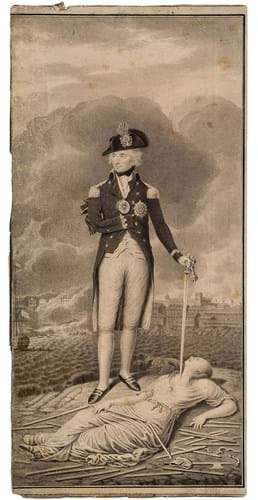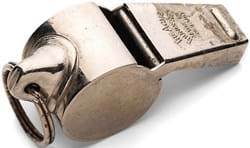The pencil and grey wash image, attributed to British artist Henry Edridge (1768-1821), was discovered among an assortment of prints bought in bulk by the vendor at a country auction.
Miller said: “We had three phones on it, and at least two or three serious room bidders. Once it got started on the phones, it was between a room bidder on the front row and the phones up to about £13,000 then between two phones to the end.”
It was knocked down at £15,000 to a London agent for a client, probably a private collector.
“We are delighted with the price of course – new graphics of Nelson of this quality are rare – and had it been signed I’m sure it would’ve run further,” added Miller. “Considering it was a lucky find for the vendor who bought it in a pile of prints for £70, he’s also thrilled.”
Never issued
At first glance the 14¼ x 7in (36 x 18cm) picture could be mistaken for a print itself, but on closer examination it became clear that it was a contemporary design from Nelson’s lifetime that was never issued and lost for 220 years. The portrait depicts Nelson as the victor of Copenhagen (1801) with the city’s warehouses blazing behind him.
At his feet lies Marianne of France, his sword tip resting on her throat. Miller said: “While this serves as a potent image of the Danes’ defeat, this portrait was probably rejected as it was deemed ungallant; the vanquished girl at his feet is presented as a fragile beauty and perhaps more magnanimity should perhaps have been shown by Nelson in victory.”
Nelson was supposed to be subordinate to Admiral Hyde Parker at the Battle of Copenhagen, but his famous audacity was clear when he was ordered to withdraw and he raised his telescope to his blind eye and said: “I really do not see the signal.”
Hat jewel
Edridge produced two or three full-length views of Nelson - a signed example ascribed to 1802 may be viewed at the National Museum of the Royal Navy, Portsmouth, also in undress uniform, but hatless.
The hat on this example sports a finely detailed view of his famous Chelengk (Ottoman military decoration, a turban jewel), awarded after the Battle of the Nile by Sultan Selim III in 1798. It was the first such award given by an Islamic leader to a non-Muslim.
The jewel pictured here appears to conform closely to the re-constituted version recently researched, produced and written about by Nelson authority Martyn Downer in Nelson’s Lost Jewel (published by The History Press, London 2017) suggesting Edridge may have had a first-hand view of this unique decoration. Downer is a former director and head of jewellery at Sotheby’s.















